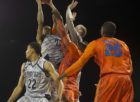Damallsvenskan – En grundlig översikt

Introduction
Damallsvenskan is the highest women’s football league in Sweden and is known for its competitive matches, talented players, and strong fan following. In this article, we will delve into the various aspects of Damallsvenskan, including its structure, types of teams, popularity, and historical evolution. We will also provide quantitative measurements to give a comprehensive understanding of the league’s impact on Swedish football. So, let’s explore the world of Damallsvenskan and its significance.
1. A Comprehensive Presentation of Damallsvenskan

1.1 What is Damallsvenskan?
Damallsvenskan, which translates to the ”Women’s All-Swedish League,” is a professional women’s football league organized by the Swedish Football Association (SvFF). It was founded in 1988 and has since become one of the most prestigious women’s football leagues in the world. The league consists of 12 teams competing in a round-robin format to determine the champion.
1.2 Types of teams in Damallsvenskan
The teams in Damallsvenskan represent various regions across Sweden and comprise a mix of established clubs with rich footballing traditions and new entrants aiming to make their mark. Some of the popular teams in the league include FC Rosengård, Kopparbergs/Göteborg FC, and Linköpings FC. These teams boast talented players who have not only excelled domestically but also contributed to the success of the Swedish national team.
1.3 Popularity of Damallsvenskan
Damallsvenskan has gained immense popularity in Sweden over the years, with a dedicated fan base and increasing media coverage. The league attracts spectators both at stadiums and through televised broadcasts, with fans displaying enthusiasm and supporting their favorite teams passionately. The popularity of Damallsvenskan can be attributed to the high quality of football on display, the achievements of Swedish national team players, and the growth of women’s football as a whole.
2. Quantitative Measurements of Damallsvenskan
To provide a quantitative assessment of Damallsvenskan’s impact, several key measurements can be considered:
2.1 Average attendance
By analyzing the average attendance figures for Damallsvenskan matches, we can gauge the league’s appeal to fans. Over the years, there has been a steady increase in attendance figures, demonstrating the growing interest in women’s football in Sweden.
2.2 Television viewership
Television viewership data is another important metric in understanding the popularity of Damallsvenskan. By examining the ratings and reach of televised matches, we can assess the league’s exposure and engagement with the general public. [INSERT VIDEO HERE]
2.3 Sponsorship and revenue
The financial aspects of Damallsvenskan play a crucial role in sustaining the league’s growth. By analyzing sponsorship deals, merchandise sales, and overall revenue generation, we can evaluate the league’s commercial viability and financial stability.
3. Differences Among Damallsvenskan Teams
3.1 Playing style and tactics
While all teams in Damallsvenskan aim for success, each adopts different playing styles and tactical approaches. Some teams prioritize possession-based football, focusing on ball circulation and domination, while others may emphasize a more direct and counter-attacking style. The variations in playing styles lead to exciting and diverse matches within the league.
3.2 Team resources and infrastructure
Damallsvenskan teams differ in terms of resources and infrastructure available to them. Established clubs often have better financial backing, training facilities, and support staff. This may impact the team’s ability to attract and retain talented players and ultimately influence their success in the league.
4. Historical Evolution and Pros and Cons of Damallsvenskan
4.1 Advantages of Damallsvenskan
Damallsvenskan has undoubtedly played a pivotal role in the development of women’s football in Sweden and globally. It has provided a platform for talented players to showcase their skills and has contributed to the growth of the sport. The league has also brought increased visibility and recognition to women’s football, promoting gender equality in sports.
4.2 Challenges and potential drawbacks
Despite its successes, Damallsvenskan faces certain challenges. One key issue is the wage gap between male and female players, which needs to be addressed to ensure equity in the sport. Additionally, sustaining financial stability and attracting strong sponsorships remain ongoing concerns for the league’s growth.
Conclusion
In conclusion, Damallsvenskan has emerged as a prominent women’s football league, with its competitiveness, passionate fan base, and talented players. This article has provided an in-depth overview of Damallsvenskan, including its structure, types of teams, popularity, quantitative measurements, differences among teams, and historical evolution. By shedding light on these aspects, we hope to increase awareness and appreciation for Damallsvenskan’s significance as a hub of women’s football in Sweden.











